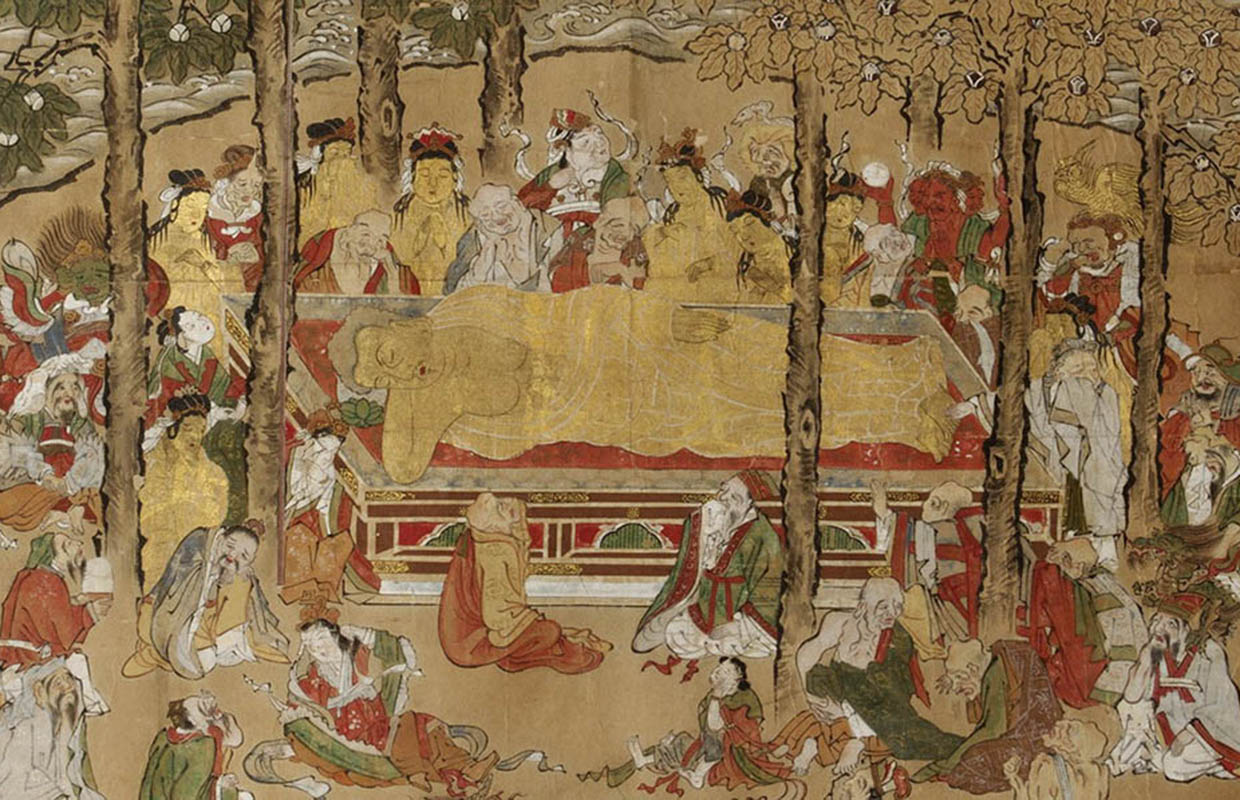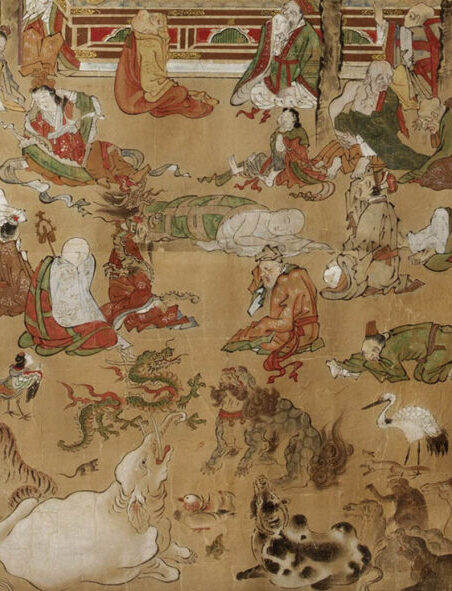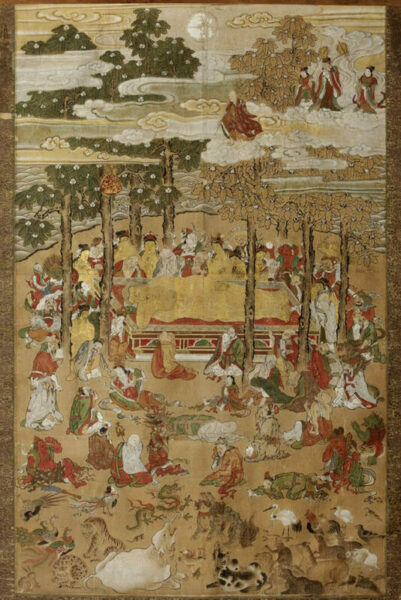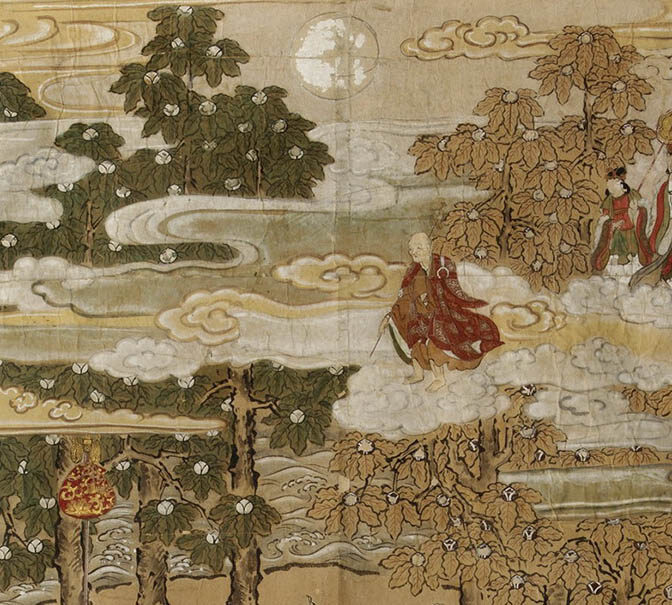
16 Mar THE BUDDHA’S NIRVANA
by Renzo Freschi
Legend has it that when he was 80 years old the Buddha Sakyamuni fell ill and gathered his disciples and followers to announce his imminent death. He was then invited for dinner in the hut of a devotee where he probably ate a poisonous mushroom. Lying down in a thicket of sala trees – the same kind of tree under which his mother had given birth to him – he entrusted his disciples with the task of spreading the doctrine. Lastly, he reassured all those present about his passing into nirvana and stopped talking.
The painting shows the Buddha lying on his right side on a pallet raised from ground; the head rests on the hand, while the left arm is stretched along his side. It is the departure from earthly life, the entering into perfect nirvana – the final liberation from samsara, the cycle of death and rebirth. Half the trees under which Sakyamuni is lying suddenly die, while the other half cover in flowers, as if nature too participated in this passage from fading life to nirvana; the almsbowl wrapped in a gold-embroidered red cloth hangs from a branch. Maya, Buddha’s mother, comes down on a cloud from the Heaven of the gods to pay homage to her son ringed by disciples, arhats, bodhisattvas, the four guardians of the world, demons and simple devotees. Many are stunned, others are overcome with grief; on the right someone touches the Master’s feet as if to check if he is really dead.
But not everyone despairs and the bodhisattvas, who are closest to the awareness of the Awakened One and therefore painted in gold like the Buddha, gather in prayer, conscious that nirvana means liberation from suffering and delusion. The only one who does not seem to be involved in the scene is Ananda, his favorite disciple, who lies sleeping before the Master.


In the painting’s lower half (symbolically the lowest level of awareness) animals and insects appear astonished; some felines, heads turned to the ground, have an expression of human sorrow, while the elephant with its raised trunk seems to trumpet his affliction to the sky. Among the many bystanders are the twelve animals of the lunar calendar, a metaphor suggesting that even Time has momentarily stood still. All living beings participate in the loss of the Enlightened One who gave everyone the hope to stop the wheel of samsara. It is a symbolic representation of the whole world, both living and inanimate, stopping at his disappearance. In spite of this theme of death the painting is by no means an image of grief, for the central figure of Buddha and his expression emanate a sense of profound peacefulness. Realism and symbolism blend in a highly compelling scene that is also a spiritual journey into the human soul, into its fears and hopes. Each individual figure is different and lives the moment with its own intimate expression: many more reincarnations will be necessary to understand and accept that death is just a transition and that bereavement and loss – even of the Master – mark the passage to another dimension. Every year paintings of the Parinirvana are displayed in many Japanese temples on the 15th day of the second month of the lunar calendar, the date on which the event is celebrated.
THE BUDDHA’S PARINIRVANA
Japan – Edo Period, 18th / 19th century
Gouache on paper – 96 by 59 cm




anthony abbott
Posted at 06:43h, 06 DecemberThank you for a fascinating explanation of the Nehanz0. I am wondering what is your source for Shakyamuni eating a poisonous
mushroom? also, is this painting for sale or just in your personal museum?